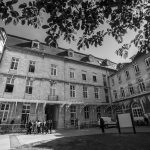Bilingualism is a fascinating and complex phenomenon, much more nuanced than simply being able to speak two languages. It’s about the interplay of language proficiency, usage, and the unique linguistic identity that each bilingual person carries. Let’s simplify and explore the multifaceted nature of being bilingual.
What Makes Someone Bilingual?
Defining who is bilingual can be quite tricky. Typically, it involves someone’s skill and frequency of using two (or more) languages. Interestingly, a perfectly balanced use of two languages is quite rare. Most bilinguals find themselves more proficient in one language, using each language for different situations or contexts. This reality challenges the notion that bilinguals are like two monolinguals in one body.
Bilingualism in Individual Lives
Globally, a significant portion of the population is bilingual or multilingual, thanks to the diverse linguistic environments we live in. However, the depth of bilingualism varies widely. Someone might speak one language at home and another at work, or they might understand a language but struggle to speak or write it. These variations highlight the personal nature of bilingualism.
Challenges and Misconceptions
The concept of being equally skilled in two languages is an oversimplification. Most bilinguals have a dominant language, which may not necessarily be their first language. Moreover, comparing bilinguals to monolinguals can be misleading. Bilinguals often use their languages for distinct purposes and in different social contexts, which can influence their proficiency and usage.
The term “semilingual” has been used to describe bilinguals thought to have inadequate skills in both languages. Yet, this perspective is now criticized for overlooking the external factors that shape language development, such as social and economic conditions. Recognizing the cognitive benefits of bilingualism, like enhanced creativity, offers a more positive and accurate view.
The Holistic View of Bilingualism
Recent understandings of bilingualism emphasize its holistic nature. Bilinguals are not half-formed monolinguals but unique individuals with their own comprehensive linguistic profiles. This shift in perspective acknowledges the complex and integrated nature of bilingual language use.
Types of Bilingualism
Bilingualism can develop early in life, with children acquiring two languages simultaneously, or it can occur later, with the learning of a second language after the first. The transition from learning a second language to becoming bilingual is fluid, underscoring the continuous nature of language learning.
Code-Switching: A Bilingual Skill
Code-switching, or alternating between languages, is a common and natural practice among bilinguals. It’s used for various reasons, such as expressing a thought more clearly in one language or indicating a particular social relationship. This ability highlights the adaptability and resourcefulness of bilinguals.
Redefining Bilingualism
Ultimately, being bilingual is not a static or binary condition but a dynamic and spectrum-based identity. The distinction between a language learner and a bilingual becomes blurred, recognizing that every language learner is on the path to becoming bilingual, and every bilingual has journeyed through language learning.
In essence, bilingualism is a rich and complex experience, influenced by individual abilities, social dynamics, and cultural contexts. It’s about understanding and embracing the total language experience of an individual, moving beyond simplistic labels and appreciating the depth and diversity of bilingual life.








